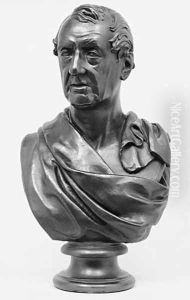Robert Ball Hughes Paintings
Robert Ball Hughes was a prominent British-American sculptor active in the 19th century. Born on January 19, 1806, in London, England, Hughes showed an early talent for the arts. He studied at the Royal Academy Schools in London, where he was awarded several prizes for his sculptures, establishing a solid foundation for his career.
Hughes's work was characterized by his classical style and his skill in both relief and in-the-round sculptural techniques. In 1829, he gained significant recognition for his sculpture 'Eve Repentant,' which was exhibited at the Royal Academy. This early success led to further commissions in the United Kingdom, and his reputation as a skilled sculptor began to grow.
In 1830, looking for new opportunities, Hughes emigrated to the United States. He settled in Boston, Massachusetts, which was then a hub for culture and the arts in America. His move to the U.S. proved beneficial, and he quickly established himself as a leading figure in the American art scene. Among his notable works during this period was a bust of Alexander Hamilton, which showcased his adeptness at portraiture.
Hughes was also known for his larger works, such as the monument to Nathaniel Bowditch in Mount Auburn Cemetery in Cambridge, Massachusetts. His work extended to various mediums, including bronze, marble, and wood, and he was considered a master of bas-relief, a form of shallow relief sculpture.
Despite his success, Hughes faced financial difficulties later in life, partly due to the Panic of 1837, which affected many artists and their patrons. He continued to work and teach, influencing a generation of American sculptors. Hughes died on March 5, 1868, in Dorchester, Massachusetts. His legacy lives on through his contributions to American sculpture and the students he mentored, who carried forward his classical traditions into the later part of the 19th century.

